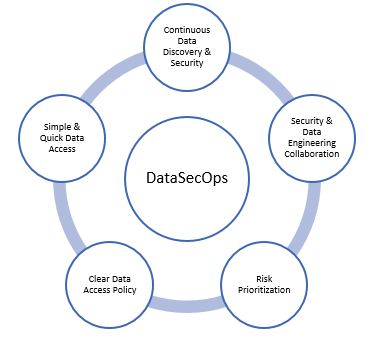No matter where you look in today’s tech-savvy world, you will always see systems and applications using data in almost all of their processes. This is because data-driven decision-making has been proven more effective and efficient by yielding better results.
While making informed, data-driven decisions is crucial to any business’s success, it is also important that data be collected, stored, and used appropriately while ensuring that all relevant data is accounted for when being analyzed.
This is why many organizations have turned to building large data lakes, where all their data resides and is accessible to anyone who wants to consume it.
This concept offers a vast number of benefits as well as significant risks to the organization itself. This blog looks at DataSecOps and why it is necessary for most organizations competing in the market.
What is DataSecOps
Security has always been an afterthought, just like it was during software development in past decades. However, the increased threat landscape of the cloud and the Internet forced an entire industry to revolutionize and implement security at every step of the process, thus creating DevSecOps.
Likewise, data has also been at the epicenter of most business decisions and plays a vital role in an organization’s success. This could include sensitive corporate information or PII (personally identifiable information).
After noteworthy data breaches, such as the Capital One breach that leaked about 140,000 social security numbers and about 80,000 bank account details, organizations started paying attention to how data is collected, stored, and used to fulfill their business requirements.
It certainly didn’t take long for organizations to realize that security needed to be a part of the data, and it could not be an afterthought, especially with steep fines being enforced by regulations such as GDPR. This is where DataSecOps comes into shift-left security within data and its processes.
Which principals are included in dataseccopes?
Similar to its counterpart, DevSecOps, DataSecOps has some distinct principles that ensure the safety of data throughout its lifecycle.
These principles include:

- Continuous Data Discovery & Security
- Security & Data Engineering Collaboration
- Risk Prioritization
- Clear Data Access Policy
- Simple & Quick Data Access
1. Continuous Data Discovery & Security
Rather than thinking of data discovery and security activities as one-time activities, always aim to implement processes that can record changes to data access in quick incremental intervals. This way, the discovery activity can keep up with the changes and not become outdated.
2. Security & Data Engineering Collaboration
Security teams alone cannot ensure the security of an organization’s vast data collections. Therefore, cross-functional teams must be assembled at the start of the project rather than at the end. This ensures that the security controls enforced on their data collections are made visible to the security teams so that they can better analyze and implement controls.
Data Peace Of Mind
PVML provides a secure foundation that allows you to push the boundaries.

3. Risk Prioritization
With large volumes of data come large amounts of threats! However, an organization’s resources usually stay limited. Therefore, prioritizing risks and how they affect the data is imperative to continuously securing data.
Proper risk assessments and threat modeling help organizations visualize and prioritize risks that are more likely to cause harm to the data and give them enough time to react or implement necessary controls to reduce the overall risk.
4. Clear Data Access Policy
Ensuring that all users and entities have a clear and well-defined access control policy ensures that security becomes an enabler for the business rather than a deterrent. This way, it is easy to request access to specific data and only receive the least privilege required to perform the required task. This ensures that the entity can conduct the task but not cause additional harm if used maliciously.
5. Simple & Quick Data Access
Having secured data means nothing if users cannot easily access it. This means providing access to the data without compromising on security or usability. It might seem like a tall task, but this may determine whether a user uses the data or not, thus being a driving factor for data democratization.
Wrapping Up
It is crucial to understand that data will always play a major role in most organizations, and keeping this data safe may even determine the organization’s success in the long run.
DataSecOps enables organizations to use data to their benefit by providing a secure environment for data storage and use.
Following the five principles mentioned in this blog will ensure that your organization is one step closer to enabling DataSecOps and maturing as business requirements start rolling in.